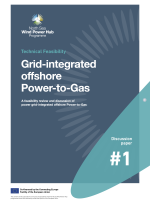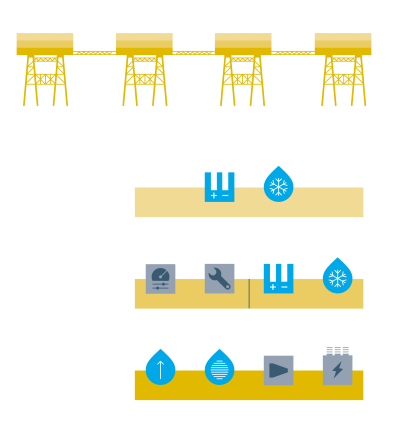Hydrogen production could take place at sea
The green power plant in the North Sea must be able to convert electric power to hydrogen fuel. This is crucial, especially on very windy days or at times of low immediate electricity demand when there is a surplus of wind energy in the system. Hydrogen is also vital if we are to achieve carbon-neutral industry and other sectors.
The obvious solution could be to send electricity to land and then convert to hydrogen onshore. After all, when we build offshore today it is usually because we
The challenge
Electrolysis, the process where electricity is used to produce hydrogen fuel, has not been developed at the scale we need onshore, let alone offshore. We need long-term capacity of 20-fold or more above what has been achieved today. The offshore environment brings unique challenges in terms of design, installation and operation. So is it even possible?
have to, for example when producing oil and gas. Wind energy is different, so why not bring as much of the production onshore as possible and save on the costs?
Analysis by the North Sea Wind Power Hub consortium has shown that offshore construction is possible. The analysis also presents design options for both onshore and offshore production. Even though the cost of building offshore is considerably higher, the solution turns out to not only be possible but also cost-competitive compared with an onshore alternative under the right conditions.
There are certain advantages in offshore green hydrogen production compared to onshore. Among other things, offshore production could require only a fraction of the area compared to onshore. One reason is the need to convert power onshore before it is used. Offshore production takes the alternating power produced by wind turbines and feeds it straight into the hydrogen production facility. On the other hand, offshore green hydrogen production requires desalination, while onshore typically uses town water that has no salt content.
The insight
Green hydrogen production at the scale we need is possible onshore as well as offshore. Facilities hundreds of miles out at sea might sound more expensive – but they have benefits and can fully compete with onshore alternatives.
All in all, offshore hydrogen production at the scale of multiple gigawatts needed for the build-out of wind energy in the North Sea will be possible and cost competitive with the onshore alternative in the decade from 2030 to 2040. To fully harvest the potential in the long term, we will in all likelihood need both types.
More information


